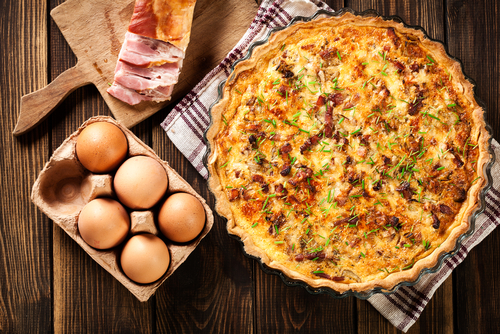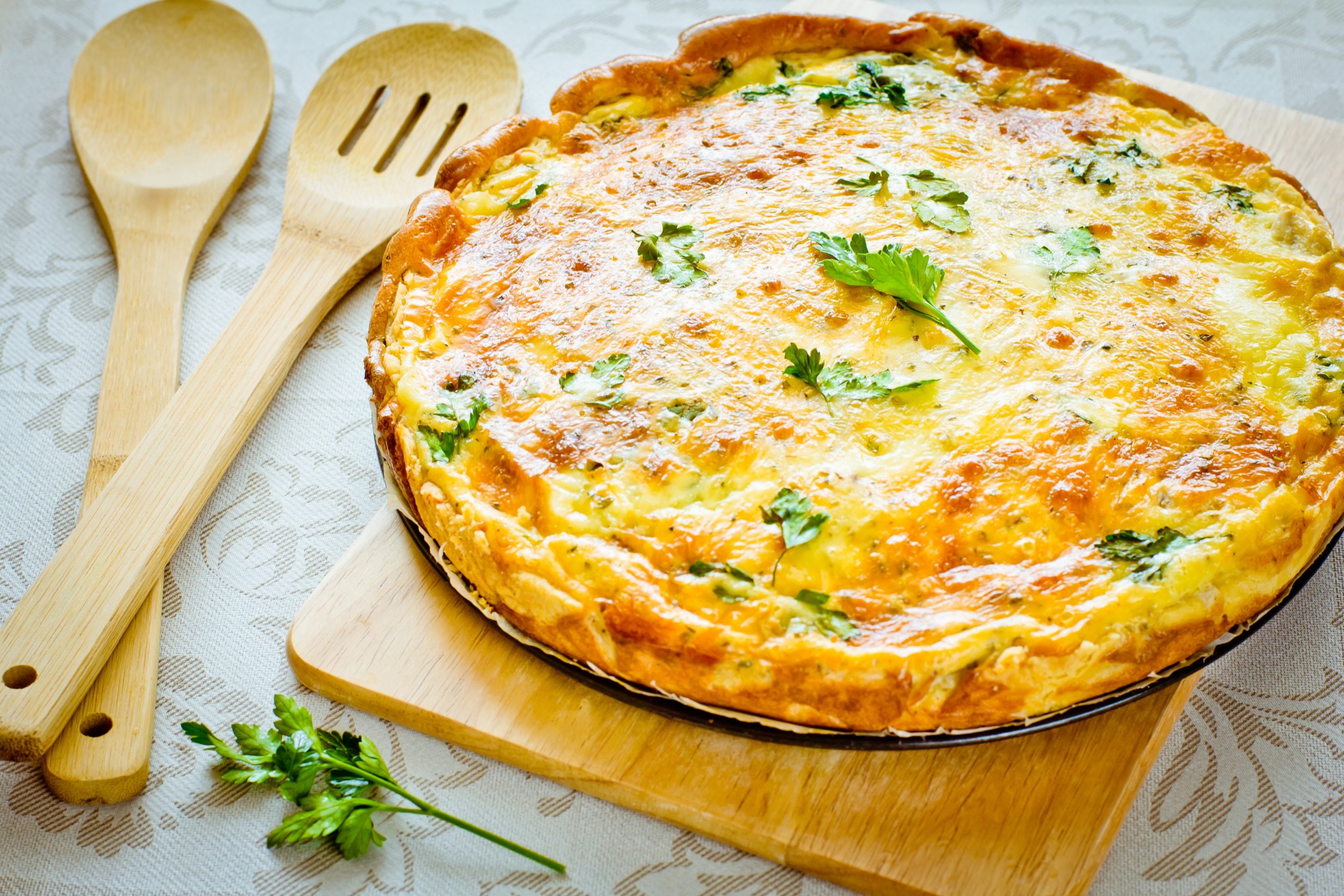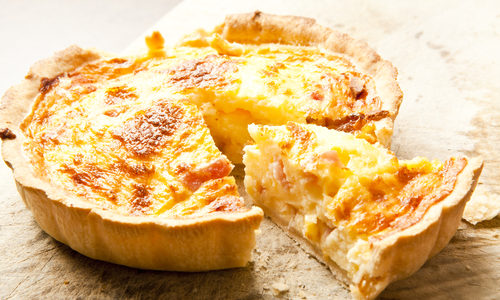While this French dish may have been at the top of its game in the 1950s, it’s still regularly served up in homes around the country. Here, we look at its origins, and a classic recipe.
Enjoyed by the masses, the most difficult decision when it comes to delving into a scrumptious, flaky quiche is deciding whether you want to eat it warm or cold.
Served both ways, households across the globe have enjoyed experimenting with this traditional dish which dates back centuries, adding an array of colourful ingredients into traditional recipes.

A quiche is a French tart which is filled with a savoury custard, cheese and either a range of meat, seafood or vegetables which is finished off with a crust made of pastry.
Quiche Lorraine is the most popular version and includes lardons of smoked bacon which can also be used to garnish the top of the quiche, too.
Served hot or cold, the quiche has been a staple on many dining tables across the decades, and is a great dish to have on offer when entertaining.
While it may traditionally be classed as a French dish, it is said the pasty-crusted tart actually originated in medieval town of Lothringen which was under German rule. The French later named it Lorraine, and that is where it is said to have got its name from.
The word “quiche” derives from the German word “kruchen” which translates to cake or tart.
In English cuisine, using eggs and cream with pastry in cooking dates back as early as the 14th Century, and the same can be found in Italian cuisine during the 13th Century.

To begin with, the original recipe, which consists of an egg and cream custard, an open pie and smoked bacon, didn’t have cheese in it. However, the popular dairy product was added at a later date to bring more flavours into the mix.
The base of the quiche was originally said to have been made with bread dough, but more commonly features short-crust or puff pasty crust, and has done so for centuries.
Quiche Lorraine became increasingly popular in the 1950s after the Second World War and nowadays you can find all sorts of ingredients housed within a quiche including broccoli, shellfish, mushrooms and more.
Quiche au fromage is a cheesy quiche, florentine is with spinach, provencale is with tomatoes and quiche Alsacienne features onions.
Not only is a slice of quiche perfect for lunch, but it makes a mean dinner, too, with many adding side salads and vegetables to their plates to bring additional colour in.
Quiche Lorraine

Ingredients
- 500g block ready-to-roll shortcrust pastry
- 200g pack of smoked bacon lardons (you can also purchase unsmoked), chopped
- 80g cheddar, cut into small cubes
- 3 eggs
- Splash of milk
- 280ml tub double cream
- Flour, for dusting your chopping board.
Method
- Lightly flour a chopping board and rolling pin and roll out the pastry. Roll until you have a perfect circle which is around 1cm thick. Place the pastry over a tin with the side with the flour on it facing upwards.
- Smooth the pastry out over the base of the tin and push it into the edges, being careful not to break it. The pastry should line all the edges. (If any is hanging over, be sure to trim it off). Place in the fridge for around 30-45 minutes to chill.
- While waiting for the pasty to chill, pre-heat the oven to 200°C/180°C fan.
- Line the pastry case with foil and tip in baking beans with more against the sides, to support pastry wall when baking.
- Bake on a baking sheet for 15-20 minutes until the sides are crisp.
- Carefully remove from the oven and take out the beans, then place back in for a further 5-7 minutes until the pastry is golden and crispy.
- Bring the oven temperature down to around 150°C/fan 130°C and remove the pasty base.
- To make the inside of the quiche, fry the bacon in pan with a touch of oil until cooked.
- Add the bacon and cheese to the bottom of the pastry base.
- Beat eggs, cream and milk together and pour half of the mixture into the tin.
- Place back in the oven and pull the oven shelf out of the oven halfway and place the tin on it. You can then add the rest of the mixture into the pastry case (this will ensure you don’t spill any).
- Bake for around 25-35 minutes until the quiche is set. Remove and allow to cool in the tin for around 5 minutes and then remove.
More in this series…
Throwback Thursday: The rise of the 50s upside down pineapple pudding
Throwback Thursday: How the coffee-soaked tiramisu dominated the 80s
